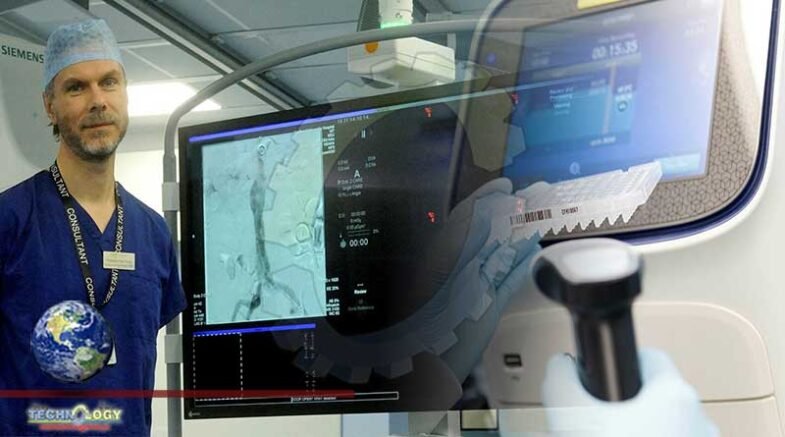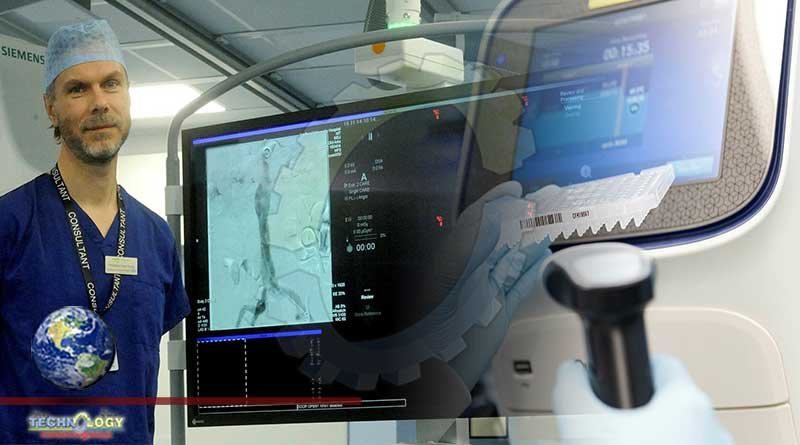Coronavirus has killed hundreds of thousands of people and has strained health systems, but use of medical technology can save lives in the future.

By Andrew Jack
Coronavirus has killed hundreds of thousands of people and has strained health systems around the world, but for Tony Young there may be a patch of a silver lining. The pandemic is accelerating use of technology to radically advance medicine and save lives in the future.
“There are so many fantastic examples of the way in which medical technology is empowering our patients and our professionals,” says Prof Young, a surgeon and national clinical lead for NHS England. Having launched his own medical-technology start-ups, he is helping to introduce innovations across the UK health service.
Digital tools, whether for data management and drug development or enhanced diagnosis and treatment, have sharply improved the response to the threat of infection and all sorts of disease.
Yet concerns about hype and misuse of medical technology threaten to limit the gains and have sparked calls for new rules and governance to protect individuals. More widely, technology has often over-promised and underdelivered.
Prof Young, from Anglia Ruskin University in Essex, points to powerful applications of artificial intelligence (AI) during Covid-19, including in “back office” logistics such as predicting hospitals’ consumption of oxygen supplies to minimise shortfalls.
More broadly, AI and machine learning are being deployed to help develop potential new drugs and to diagnose and treat patients. The UK government recently unveiled a £140m fund over three years to accelerate the testing and evaluation of the most promising AI technologies to support the NHS.
The recipients include projects that use computer analysis of CT scans to identify stroke, and early identification of polyps in the colon, that might otherwise be missed.
“We’ve talked about the genome, the proteome, the microbiome,” Prof Young says. “Now there is the digitome: how we take all that digital data about you and make predictions for diagnosis and how you might respond to the therapy we are proposing.”
He also points to the growing collection and analysis of “big data”, which helped the NHS co-ordinate large-scale clinical trials to evaluate different medicines to treat coronavirus infections, leading to the recognition of the value of the cheap steroid dexamethasone.
Yet studies that demonstrate the benefits of AI to clinicians remain scant. Many of the most widespread and important technological applications in healthcare in recent years have been more prosaic. In an example of “reverse innovation” pioneered by the company Zipline to deliver vaccines to remote clinics in east Africa, the NHS has started to experiment with drones. That has the potential to deliverCovid test samples and personal protective equipment (PPE) more efficiently and safely to where they are needed.
Greater still has been the growth in “telemedicine” consultations, as family doctors’ surgeries and hospitals limit face-to-face contact to only essential visits. An example of online discussions that can link specialists to colleagues and patients on the other side of the world is Teleheal, a British organisation that connects NHS staff to doctors in Afghanistan who are treating Covid-19.
In poorer countries, such networks offer unprecedented access to healthcare for people in remote rural areas. They also provide extra earnings for doctors in the cities, who might otherwise move abroad to increase their incomes, which would further undermine local health systems.
Important breakthroughs using technology often provide simple improvements to co-ordination and communication. Microsoft’s HoloLens, for instance, projects medical records on to goggles worn by a surgeon, who can consult other experts remotely and read machine translations of text.
Adoption has accelerated during coronavirus, allowing a single surgeon to be present while other specialists observe and provide input remotely, which saves time, economises on PPE and reduces risk of exposure to infection.
“It’s not complex but it enriches communication and the automation of processes,” says Elena Bonfiglioli, Microsoft’s managing director for Europe, Middle East and Africa region for healthcare and life sciences.
One challenge has been to win approval for the technology in the operating surgery, given that “the regulatory landscape crawls while innovation runs”, she adds.
Bitter medicine?
But advances in digitalisation of healthcare come with drawbacks. They highlight a widening “digital divide”, with highly variable access to internet and phone connections, which risks leaving behind the poorest, the elderly and others less able to use technology.
The transfer of personal health data meanwhile is fuelling a debate over who owns and controls it: the patient, the healthcare provider, the state or the companies that collect it. Sharing sensitive data — which could be used by recruiters or insurers — raises questions over individuals’ rights to privacy.
Asian countries such as China and South Korea have imposed restrictions on movement with the use of “trace and trace” phone apps. That has led to ambivalence in their uptake in the west, notably with indications that data could be passed from public health officials to the police, or sold to companies.
Originally published at Financial Times
